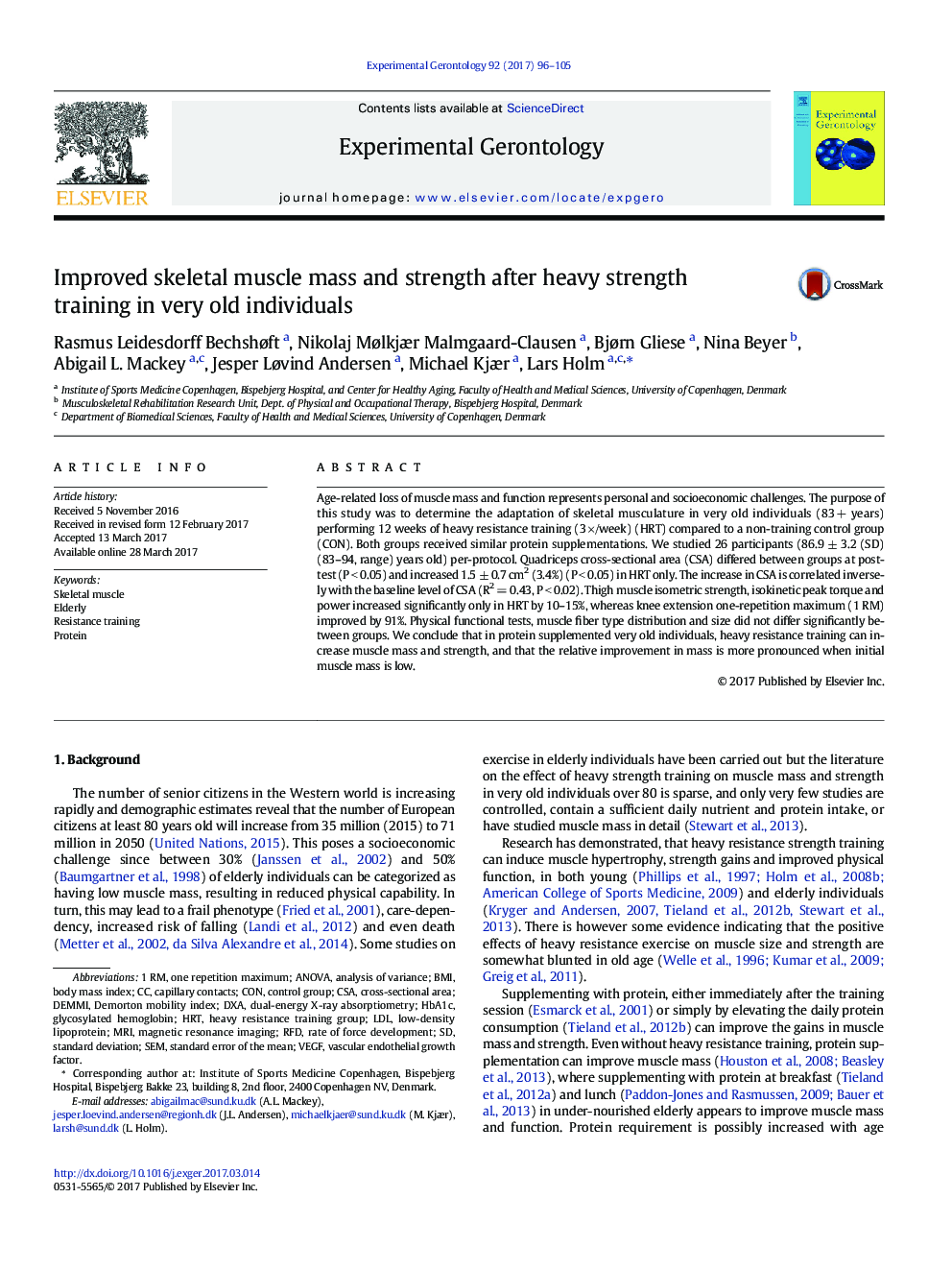| Article ID | Journal | Published Year | Pages | File Type |
|---|---|---|---|---|
| 5501572 | Experimental Gerontology | 2017 | 10 Pages |
Abstract
Age-related loss of muscle mass and function represents personal and socioeconomic challenges. The purpose of this study was to determine the adaptation of skeletal musculature in very old individuals (83 + years) performing 12 weeks of heavy resistance training (3 Ã/week) (HRT) compared to a non-training control group (CON). Both groups received similar protein supplementations. We studied 26 participants (86.9 ± 3.2 (SD) (83-94, range) years old) per-protocol. Quadriceps cross-sectional area (CSA) differed between groups at post-test (P < 0.05) and increased 1.5 ± 0.7 cm2 (3.4%) (P < 0.05) in HRT only. The increase in CSA is correlated inversely with the baseline level of CSA (R2 = 0.43, P < 0.02). Thigh muscle isometric strength, isokinetic peak torque and power increased significantly only in HRT by 10-15%, whereas knee extension one-repetition maximum (1 RM) improved by 91%. Physical functional tests, muscle fiber type distribution and size did not differ significantly between groups. We conclude that in protein supplemented very old individuals, heavy resistance training can increase muscle mass and strength, and that the relative improvement in mass is more pronounced when initial muscle mass is low.
Keywords
RfDHbA1cDXAHRTResistance trainingMRIstandard deviationCSAconanalysis of varianceANOVAMagnetic resonance imagingdual-energy X-ray absorptiometrystandard error of the meanElderlybody mass indexBMISkeletal muscleVascular endothelial growth factorVascular Endothelial Growth Factor (VEGF)Low-density lipoproteinLDLSEMcross-sectional areaRate of force developmentGlycosylated hemoglobinProteincontrol groupOne repetition maximum
Related Topics
Life Sciences
Biochemistry, Genetics and Molecular Biology
Ageing
Authors
Rasmus Leidesdorff Bechshøft, Nikolaj Mølkjær Malmgaard-Clausen, Bjørn Gliese, Nina Beyer, Abigail L. Mackey, Jesper Løvind Andersen, Michael Kjær, Lars Holm,
